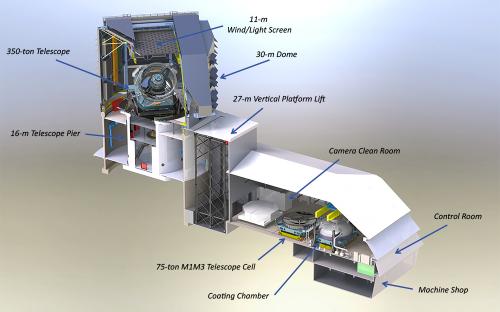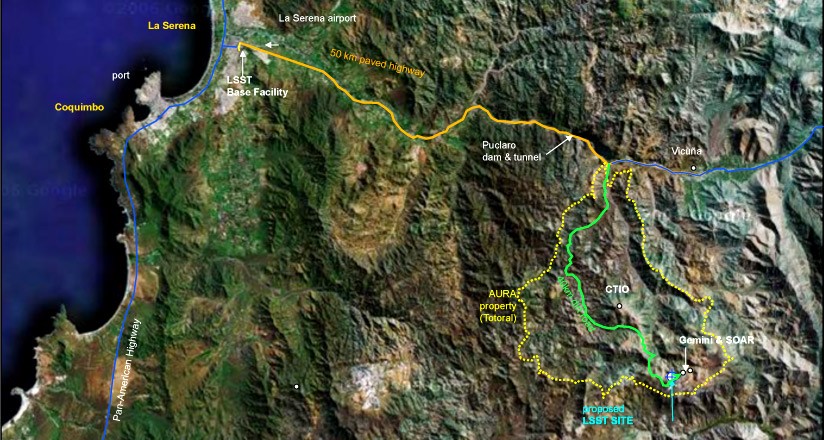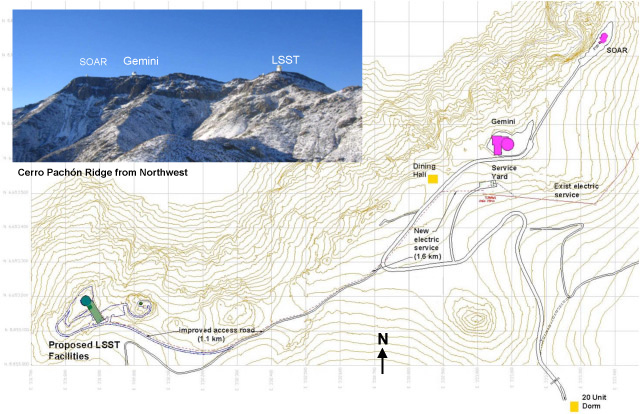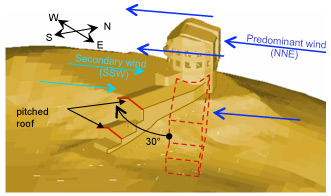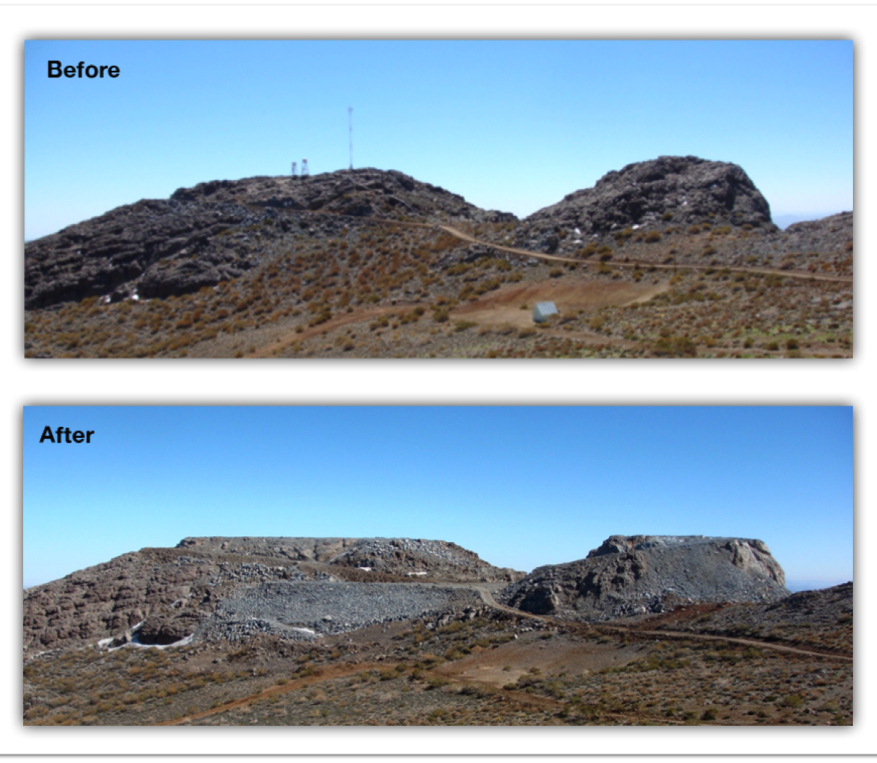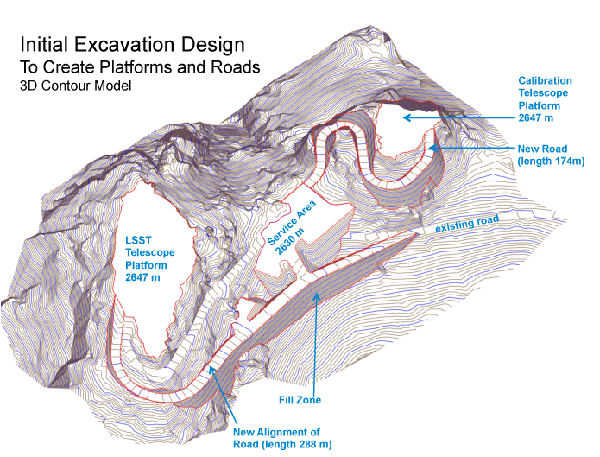The design for the LSST Summit Facility takes advantage of the natural topography of the El Peñón summit. The main telescope enclosure occupies the highest and largest peak with the attached service and operations building stepping down into a saddle area to the southeast. The calibration telescope is on a smaller peak farther to the east. This specific orientation was selected after extensive weather testing and computational fluid dynamics (CFD) analysis of the site verified that it provided the best seeing environment, or the least air disturbance, for the telescope. Geotechnical studies of the natural rock on site shows it to be of very high competency—in other words, strong and erosion-resistant, with stiffness values well above concrete at the anticipated level of the telescope foundation.The cut-away view of the telescope enclosure and service and operations building (above) shows their stepped-down layout. This design provides a contiguous protected environment for transporting and maintaining the camera and mirrors while still separating the telescope from the temperature-controlled spaces of the observatory facility. The heated operations spaces are below the service level with the heat-generating equipment located below that and farthest from the telescope. An 80-ton platform lift will carry mirrors and camera to and from the telescope as necessary for installation and maintenance.
Dedicated maintenance areas in the Support Facility will include a camera servicing area equipped with clean room spaces for working inside the cryostat that protects and cools the CCD detectors. The on-site service building will also house a dedicated cleaning and coating area to be used for both the 8.4 m primary/tertiary mirror and the 4 m secondary mirror. The mirrors and camera are not expected to leave the mountain and will receive all necessary service at the summit facility during their entire operational life.


